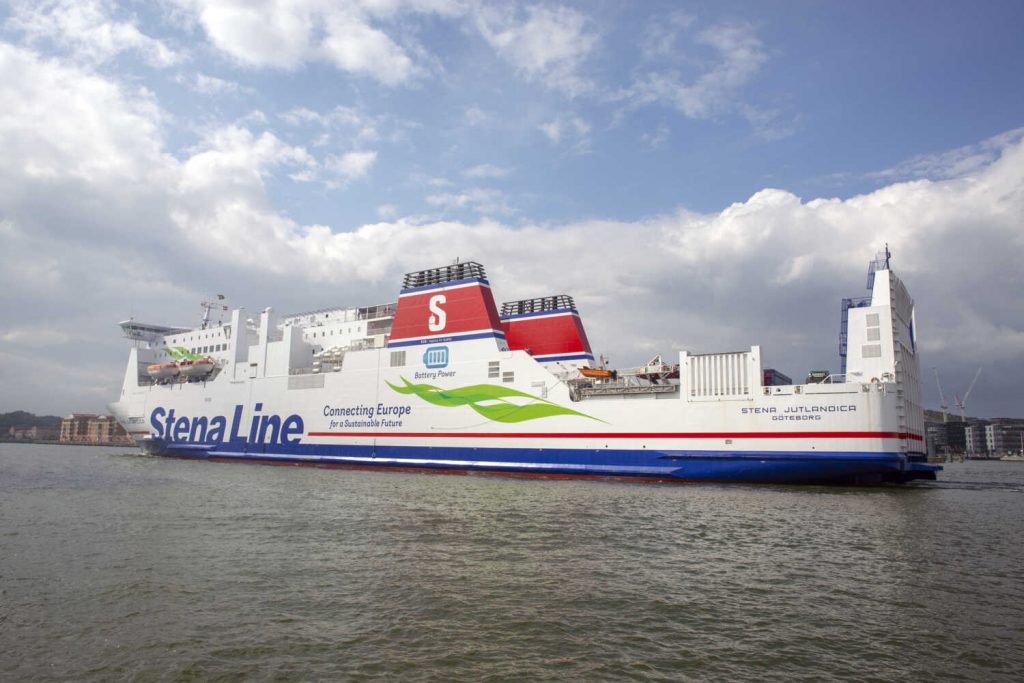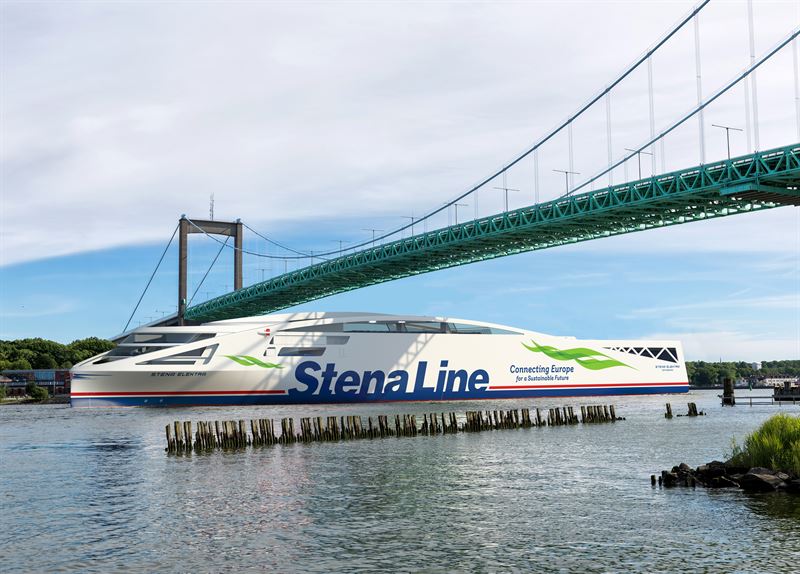Concept design for Stena’s all-electric ferry for Gothenburg decarbonization project (Stena Line)
In an effort to speed up the transition to fossil-free fuels in the transport sector, Stena Line, Volvo Group, Scania, and the Port of Gothenburg have joined forces to bring about a significant reduction in carbon emissions linked to the largest port in Scandinavia. The aim is to cut emissions by 70 percent by 2030, including a commitment from Stena to proceed with an all-electric ferry.
Announced yesterday, the “Tranzero Initiative,” includes the electrification of sea transport as one of its goals. The focus is also on the one million truck transports and the 55,000 tons of carbon emissions generated from road transports to and from the Port of Gothenburg each year.
“No single organization or individual holds the key to meet the challenges ahead of us,” said Elvir Dzanic, Gothenburg Port Authority chief executive. “Collaboration is crucial and we are pleased to bring on board two of the world’s largest truck manufacturers and the world’s largest ferry company. With our collective expertise, breadth, and market presence we can make a real difference.”
Stena Elektra will be the world’s first fossil free RoPax vessel of its size and will measure approximately 200 metres and combine a passenger capacity of 1000 with 3000 lane metres freight capacity. The vessel will be built in high tensile steel to lower the weight and increase efficiency and it is estimated the vessel will run on battery power for approximately 50 nautical miles, the distance between Gothenburg and Frederikshavn. The battery capacity will need to be approximately 60-70 MWh and the vessel will be charged in port. Stena Line is also looking into combining the electrification with other alternative fossil free fuels such as fuel cells, hydrogen and bio methanol for longer reach of the vessels.
”The electrification of shipping has only just begun. We see a great potential for both battery hybrids and battery-powered vessels on several of our short-sea shipping routes in the future. But it takes more than the electrical ships, we also need to develop the infrastructure and charging possibilities in the ports and terminals in the same pace and that is a reason why collaboration projects like this are so important, said Niclas Mårtensson, CEO Stena Line.
Since 2018 Stena Line is operating the battery hybrid vessel Stena Jutlandica on the Gothenburg-Frederikshavn route, using battery power for manoeuvring and powering the bow thrusters when the ship is in port. The batteries are charged with green shore power in the port of Gothenburg as well as during operation and in total CO2 emissions are lowered by 1,500 tonnes per year, equal to the emissions from 600 cars per year.






